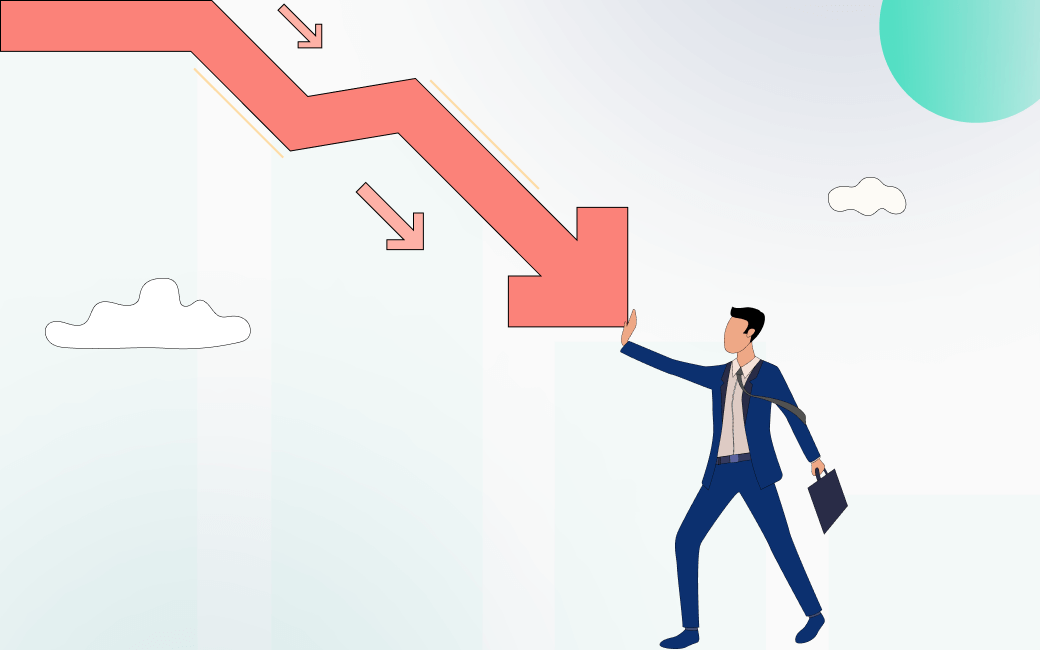Introduction
Many traders use stop loss orders as a part of their strategy. What is a stop loss order, and why are these tools so important when trading?
A stop loss order is an agreement with your broker to buy or sell a security at a predefined price. It is one of the most essential risk mitigation techniques, effectively allowing you to “cut your losses.” Traders use stop loss orders to limit how much they could lose on a specific position. Once the stock price falls under the stop loss, the order is activated, and it becomes a “market order.”
What Is a Stop Loss Order?
Traders may arrange stop loss orders with their brokers as part of their trading strategy. A stop loss order ensures that the trader will exit a position at a specific price. The amount in question will be the max ceiling of the potential loss. Once the price reaches that level, the stop loss order will be instigated, rendering it a “market order.” At this point, the order will be sold at the current market price.
The reason traders and investors place stop loss orders is to prevent excessive losses, should the price fall below a threshold of comfort. As the name suggests, the order is to “stop” the “loss”!
Let’s work through an example. Say you buy Apple (AAPL) for $30 per share. You don’t want to lose more than 15% below the asking price for which you purchased the stock. So, you set a stop loss order for $25.50. Should the stock price drop to less than $25.50, the stop loss becomes a market order, and you will sell your shares at the prevailing market price. Of course, the order will not be activated if the price never dips below that threshold, and the shares will not be sold.

Why Should You Set Stop Loss Orders?
A stop loss order is a critical part of risk mitigation. It allows traders to decide – in advance – how much they are willing to lose before exiting a position. In addition, it takes some of the oversight and management away from your position. By using a stop loss order, you ensure an automatic move in your favour, without the need for monitoring your holding on a regular basis.
Stop losses protect you against significant losses – or any loss deemed excessive according to your plan – should there be a period of market volatility or the price not behave as predicted. The percentage at which you set the order dictates how much you are ready to lose in a sole trade. Many brokerage platforms will automatically offer you the option of placing a stop loss order when you open a position. The stop loss orders you execute may be visible to other brokers through your “order book.”
Assessing potential losses as well as targeted profits is an integral part of your overall trading strategy. By implementing a stop loss order, you can outline the ideal risk-return trade-off of each position. Stop loss orders also help keep your emotions out of the trade and operate as a type of “reality check” when trading. After all, you may be overly confident in a stock when you have personally invested in its success.
The advantages of stop loss orders can be summed up here:
- Free: stop loss orders cost nothing to execute, yet they can save you from enormous losses (potentially your entire holding). You will be charged commission once the stop loss order is triggered, but only the regular commission you would be charged should you make the active decision to sell.
- Prevents losses: certain trading styles and strategies benefit more than others from stop loss orders. For example, day traders who open and close many positions throughout a single trading session may not have the time to oversee each one. A stop loss order lets the trader decide in advance when to sell.
- Checks emotions: By outlining the verge of the price below which you would sell, you can keep your emotions out of the trading decision. Sometimes, traders’ judgement is clouded by the amount they have invested into a particular stock, and understandably so! A stop loss order ensures you get out before losing more than you went in with. Protects profits: Similarly, another advantage to these orders is to lock in your profits as well as cut your losses. Under this definition, stop loss orders are sometimes called “trailing stop” (more on these below).

Trailing Stop Loss Order
A trailing stop is an order whereby there is no fixed “sell” price. Instead, the trailing stop price is a percentage above or below the asset to the trader’s benefit. The trailing stop is a way to lock in profits and reduce losses.
Traders would place a trailing stop below the market price for a “long” position and above the current market price for a “short” position. In other words, when you are buying vs selling a stock. The price is tracked in one direction only, and once it is triggered, it will not move in the opposite direction. Trailing stops are more flexible than fixed stop loss orders and do not need to be reactivated.

Stop Loss vs Limit Orders
Stop limit orders are another type of stop loss order. Like the latter, the giveaway is in the name: there is a “limit” on the price they will be triggered. When a stop loss order is activated, the order is to sell at the current market price. One disadvantageous of stop loss orders is that, should there be no buyer to go long on your shares at the market price, you may end up with a lower one (a phenomenon known as “slippage”).
However, unlike stop loss orders which will sell at any market price, stop limit orders prompt a sale at the “limit” price (or higher). There are pros and cons to any exit strategy. One drawback of stop limit orders is that the sale is not guaranteed, while a limit price is guaranteed. In a market where prices are moving fast (and against you), the limit order will not get you out of the position in good time.

Stop Loss Strategy Options
Traders will generally designate stop loss orders (be they stop loss alone, limit orders, or stop trailing orders) when they set up their trades. Like any other type of order, you simply choose to “buy” or “sell”, and should the ticket revert to a “market order,” you would change it to “stop”.
Your options to place stop loss orders will vary broker by broker. Most platforms will present a stop loss order option when you place your trade. You can edit this order later.
The risk-return tools at your disposal are one of many parameters when choosing your broker. For example, here at TradeOr, we like to ensure our clients have every trading technique at their disposal. Techniques like “stop-loss” and limit orders are one way to reduce loss alongside locking in your profits. These orders should be complemented by
technical analysis tools such as charting software, timely market updates, and a reliable customer support team. You will find these and more at TradeOr.
What is of utmost importance is where you place your stop loss orders. The right place will depend on many factors and should be determined through trial and testing. Stop loss orders are an integral element of your overall trading strategy. What works for you may not be suitable for another trader, as the levels of risk you are willing to assume may differ. Choose a trading plan which sets out how you will execute profitable trades and think of your stop loss orders as a type of free insurance plan within them.

FAQs
- What Is A Stop Loss?
A stop loss order is a tool traders use to ensure they exit a position without excessive losses. There are three types: stop loss orders, stop limit orders, and trailing stop loss orders.
- Is Stock Trading Profitable?
While no investment or trading strategy is guaranteed of sure-fire success, many traders bear testament to the profitability of the stock market. The average return of the stock market is 10% per year. The appeal of stock trading – flexible hours, high return rates – requires a dedicated mindset and clear trading plan.
- How To Set Up A Stop Loss?
You set up a stop loss at the same time that you place your order. You choose to set a fixed price below which you would sell at market price (stop loss order). You also have the option of placing a trailing stop loss order, whereby the loss avoided or profits protected would be relative through a percentage of the price.